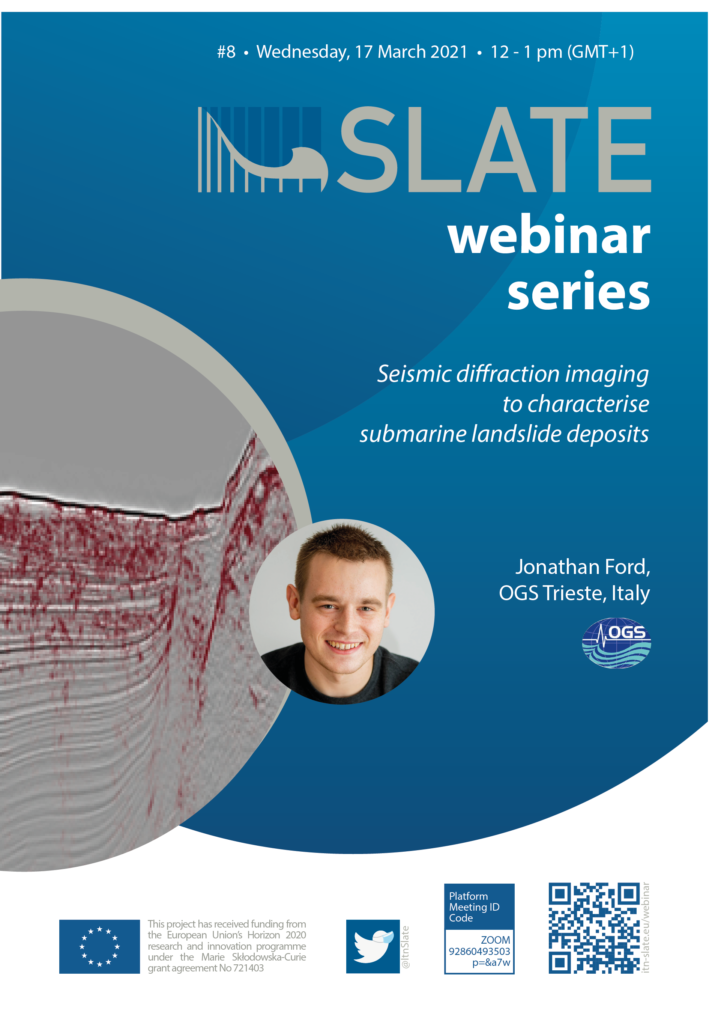
The internal structure of submarine landslide deposits can constrain the kinematics, strain distribution and flow type of the slide, important for assessing the geohazard potential of future mass-movements. Seismic reflection techniques, however, often lack the resolution to properly characterise this complex, heterogeneous structure. In this talk I will argue that submarine landslide deposits can be considered as “diffraction generators” and discuss the implications for the acquisition, processing and interpretation of seismic data for marine geohazard investigation. Seismic diffractions are generated by geological heterogeneities on the scale of the dominant seismic wavelength, and are recorded during acquisition but rarely directly utilised. I will present synthetic modelling results from a fossil mass-transport deposit outcrop, which show that a significant amount of the recorded seismic wavefield is likely to be diffracted rather than reflected. I will then explore how this diffracted energy can be exploited to characterise submarine landslides by applying diffraction imaging to field examples from the Gulf of Cadiz (from the INSIGHT cruises in 2018 and 2019). I will demonstrate how diffraction images can provide improved resolution of small-scale, complex internal structure and a more physically correct alternative to traditional seismic discontinuity attributes. I also argue that diffraction images of submarine landslides will necessarily include a large contribution of out-of-plane energy, historically considered a source of noise. If these out-of-plane diffractions can be clearly identified, they can constrain the 3-D geometry of submarine landslides from single 2-D seismic profiles. Diffraction imaging offers a relatively cheap, semi-automatic route to improving the utility of existing seismic data for marine geohazard investigation.
.
When & Where?
- Wednesday, 17 March 2021
- 12 pm – 1 pm (GMT+1)
- via ZOOM
- permanent Zoom Link
- ID: 928 6049 3503 Code: p=&a7w
Webinar Flyer:


